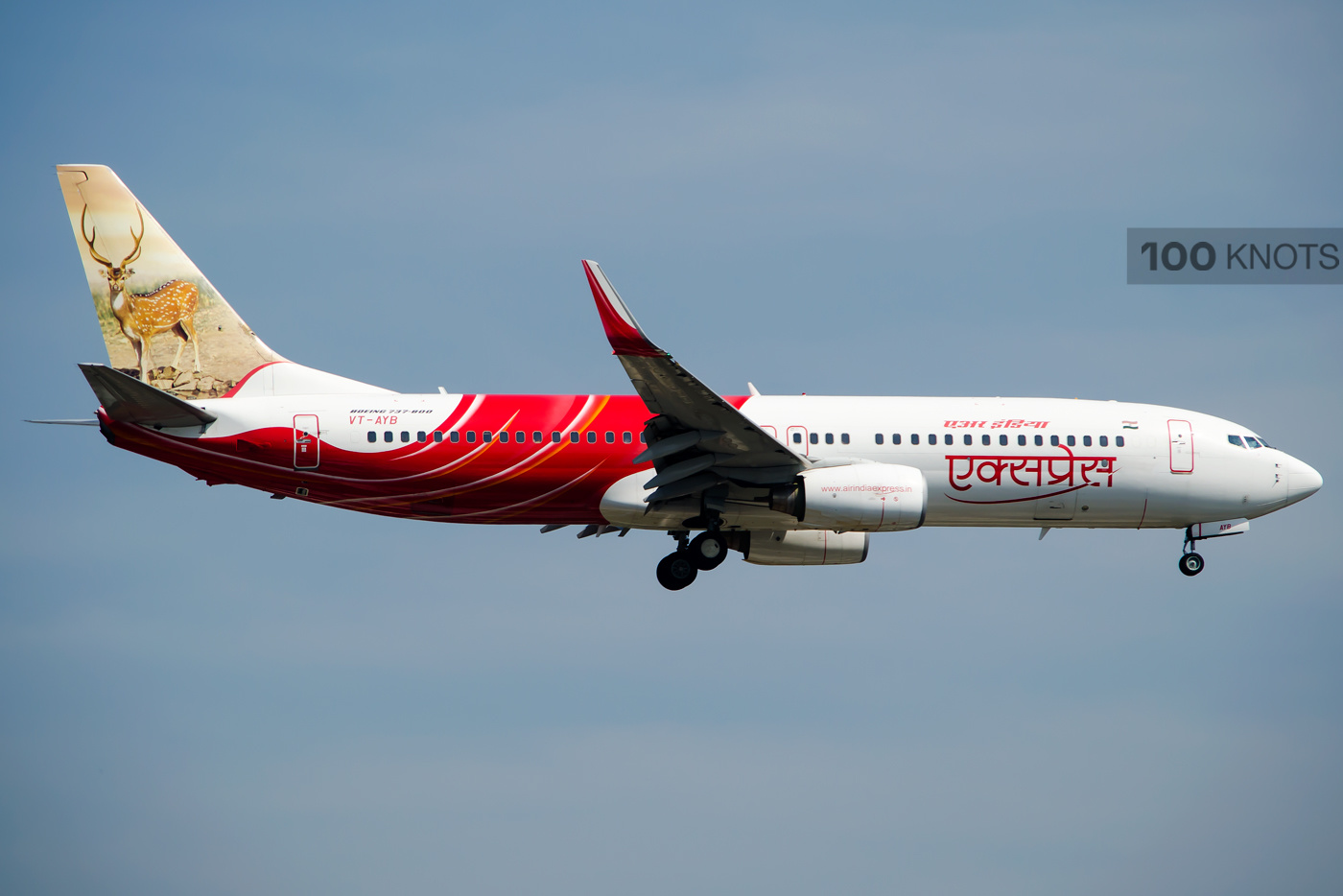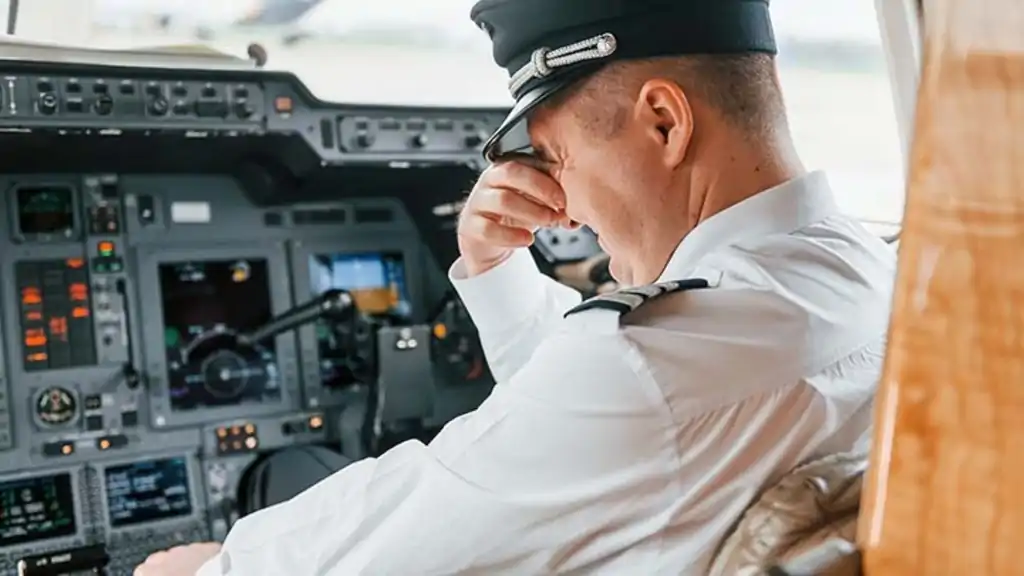Air India Express Set to Expand its Fleet by Adding 50 new Boeing 737 MAX Aircraft in Next 15 Months
Radhika Bansal
14 Oct 2023

Air India Express, which is in the process of merging AIX Connect with itself, plans to induct 50 new B737 MAX planes in the next 15 months as the Tata Group bolsters its aviation business. Besides, the combined entity of Air India Express, also the country's first international budget carrier, and AIX Connect, formerly known as AirAsia India, will be launching its new brand on October 18.
In a message to staff this week, Air India Express and AIX Connect Managing Director Aloke Singh said key milestones, including migration to a common reservations and check-in system, have been achieved in terms of integration of the two carriers. Currently, the combined entity has a fleet of 56 aircraft, including 26 B737, 2 B737 MAX, 5 A320neo and 23 A320.
"Over the next 15 months, a total of 50 new B737 MAX aircraft will join the LCC fleet, allowing us to grow our network to new destinations and increase flights on existing routes," Singh said in the message. According to him, the focus is now on the preparedness for deploying this capacity and that already, more than 800 aircrew and other operational personnel who have joined the entity are under various stages of training.
Together, the combined entity operates around 2,700 flights every week. Out of them, about 700 are operated by Air India Express and the rest by AIX Connect. They fly to 44 destinations, including 14 international ones. The combined entity will be the Low-Cost Carrier (LCC) of the Tata Group which took over the reins of Air India and Air India Express in January last year.
"On the integration front, key milestones have been achieved; these include migration to a common reservations and check-in system, a common website and agent portal, aligned product and service offerings, and above all, use of a common brand and domain," Singh said in the message.
Meanwhile, Tata Group is in the process of consolidating its airline business. Apart from Air India Express-AIX Connect integration, Air India is merging Vistara with itself. Vistara is a joint venture between Tatas and Singapore Airlines, in which the former holds a 51% stake. India is one of the fastest-growing aviation markets in the world and air traffic is also on the rise.
Air India Express Inducts Aircraft from AirAsia India
AIX Connect (formerly known as AirAsia India) completed the transfer of an A320 aircraft, the VT-ATJ, to Air India Express as part of the merger of the two airlines, Air India's CEO and MD Campbell Wilson told employees in a letter on October 6.
"VT-ATJ, at A320 originally from Air Asia India, became the first to transfer into the Air India Express fleet after completing DGCA’s detailed five-phase CAP3100 process," Wilson said. He added that other aircraft will soon be transferred from the fleet of AIX Connect to Air India Express to ensure that the two low-cost carriers operate as one and the airline has full flexibility to deploy aircraft most optimally and efficiently across its network.
"VT-ATJ has now been operating domestically for a few days and will commence international service tomorrow, Oct 7. Well done to the IX/I5 teams for the regulatory and preparatory work involved," Campbell said.
In fact, it recently received its first two 737 MAXs, marking the beginning of the deliveries of more than 150 of the type ordered for the airline. The two MAXs that recently flew to India were part of the 55 Boeing 737 MAX 8 aircraft initially meant for various Chinese carriers.
Air India Express is slated for a significant fleet development due to the merger. Not only will it receive more than 25 A320s of AirAsia India but also strengthen its Boeing 737 fleet by adding the MAX series of aircraft in the coming years. In fact, it recently received its first two B737 MAXs, marking the beginning of the deliveries of more than 150 of the type ordered for the airline.
Read next
Air India will begin retrofitting its legacy widebody and Airbus A320neo aircraft next year as part of its fleet transformation strategy, reported Aviation Week. It will include the installation of new seats and updated inflight entertainment connectivity, along with newly added premium economy cabins. In addition, the project includes painting the aircraft with the new branding.
The airline was privatized in 2022 and parent company Tata Group is in the process of consolidating its four airlines--Air India, Air India Express, AirAsia India and Vistara--into two (Air India and Air India Express).
The retrofit project will run from April 2024 through 2027, according to Sisira Dash, Air India's chief technical officer, speaking at Aviation Week’s MRO Asia in Singapore on September 27. In detailing the plan, the timing of the refurbishment has been chosen after considering the current supply chain challenges.
“By that time (2024), we expect the parts, seating and other required items to be available,” says Dash. “It’s not only the seats but the AV system and the connectivity--everything has to come together.” Dash did not disclose which partners or vendors the airline is working with.
The airline’s widebody fleet is comprised of Boeing 777 and 787 aircraft. Air India is expecting its first Airbus A350 family aircraft delivery in late 2023 to add further widebody presence to its fleet.
New Configuration of Aircraft
The configuration for the B777s has been agreed upon, with Air India planning to offer first, business, premium economy and economy class seats on board, as shown in a new video on socials. Safran Seats France’s Unity herringbone, which offers a wide seating position and direct aisle access, will serve as the platform for both first and business, a source tells RGN. The first retrofitted aircraft will arrive in the second half of 2024.
As of September, it operates 27 A320neo and four A321neo aircraft but has orders for more than 400 Airbus and Boeing narrowbodies. The retrofit project spend, overseen by parent company TATA Group as part of efforts to establish Air India as a globally competitive airline, will be worth around USD 400 million.
The carrier’s MRO arm AI Engineering Services has remained government but speculation is that the business will be privatized in the 2023-24 financial year. In 2021, Tata Sons’ subsidiary Talace acquired Air India along with Air India Express and AISATS.
In August, Air India unveiled its mega brand makeover and new logo, which, the airline said, signifies “limitless possibilities”. Air India’s new logo, ‘The Vista’ — includes a modern design with golden, red, and purple colours. Besides, the Tata Group-promoted airline has partnered with fashion designer Manish Malhotra to design new uniforms for over 10,000 Air India employees on the frontlines, including cabin crew, cockpit crew, ground staff, and security staff.
Air India has placed orders for 470 planes with Airbus and Boeing. The Airbus firm order comprises 210 A320/321 Neo/XLR and 40 A350-900/1000, while the Boeing firm order comprises 190 737-Max, 20 787s and 10 777s.
(With Inputs from Aviation Week)
Read next
Pilot fatigue has emerged as a critical concern in India's aviation sector, necessitating urgent attention to ensure the safety of passengers and flight crews. Recent incidents, such as the tragic cardiac arrest of a domestic flight pilot in August 2023, have highlighted the pressing need for improved fatigue management strategies.
To address this issue, the Directorate General of Civil Aviation (DGCA) initiated a pilot fatigue data review to assess current regulations governing flight duty times. In response to these developments, aviation industry experts, including Jaideep Mirchandani, Chairman of Sky One FZE, emphasize the importance of advanced fatigue management, balanced schedules, and crew rostering solutions.
Understanding the Factors Contributing to Pilot Fatigue
Pilot fatigue can be attributed to several factors, affecting both long-range and short-range flight operations. Key contributors include issues related to sleep quality, sleep loss, and the disruption of Circadian Rhythms, which result in physiological, mental, and behavioral changes following a 24-hour cycle. Recognizing the complexity of these issues, experts have underscored the importance of addressing root causes and enhancing regulations to ensure aviation safety.
The DGCA's Initiative: A Step Towards Aviation Safety
The DGCA's decision to conduct a pilot fatigue data review is a significant step towards ensuring aviation safety. By analyzing and addressing the root causes of pilot fatigue, this initiative aims to provide invaluable insights that can benefit airlines and pilots alike. As the aviation industry continues to grow, safety should be the driving force behind policy changes, encompassing areas from pilot fatigue to maintenance, repair, and operations (MRO).
Innovative Tools for Enhanced Flight Operations
Air India recently introduced two digital tools—the Pilot Sector Report (PSR) app and DocuNet—designed to optimize post-flight reporting and document distribution processes. These tools ensure the accessibility of relevant and synchronized information, enhancing pilot satisfaction and overall flight operations. In an industry where precision and timeliness are crucial, such tools prove to be invaluable for reducing stress and enhancing efficiency.
IndiGo Airlines' Approach to Fatigue Management
IndiGo Airlines has taken a proactive approach to combat pilot fatigue by introducing wrist devices and ground-based tools. These innovative measures monitor pilots' alertness levels before and after flights, contributing to safety, punctuality, and operational efficiency. These initiatives also play a crucial role in providing pilots with timely breaks and leaves, ensuring their well-being.
The Role of Crew Rostering Solutions
Jaideep Mirchandani, Chairman of Sky One FZE, underscores the importance of crew rostering solutions in combatting pilot fatigue. These solutions allow pilots to specify lifestyle preferences, which are then automatically integrated into their flight schedules. Such personalization not only enhances job satisfaction but also contributes to better fatigue management.
Advanced Training for Aspiring Pilots
Enhancing fatigue management begins at the training stage. Jaideep Mirchandani emphasizes the need to incorporate advanced fatigue management into the training modules for aspiring pilots. This approach includes not only technology-based training but also providing insights into the scientific reasons behind fatigue. Aspiring pilots should be equipped with knowledge about key indicators and guidance on developing effective fatigue management strategies for themselves and the airlines they will serve.
Current Regulations and Rest Periods
Current Flight Time Duty Regulations stipulate that every crew member must receive rest equal to twice the flight time, but not less than 10 hours within any 24 consecutive hours. Additionally, all crew members should have a minimum of 24 hours of rest between 8 PM and 6 AM within any 7 consecutive days. These regulations are in place to ensure that pilots have adequate time for rest and recovery.
Conclusion
In light of recent incidents and growing concerns about pilot fatigue, it is clear that addressing this issue is paramount for ensuring the safety of passengers and flight crews in India's aviation sector. The DGCA's pilot fatigue data review, along with innovative tools, personalized solutions, and advanced training, represents a comprehensive approach to fatigue management. By focusing on the well-being of pilots and aligning it with the need for efficient flight operations, the industry can foster a culture of safety and excellence.
Read next
Air India Prevents Fraud of Over INR 3 Crore in Last 18 Months; Takes Deliveries of 5 Leased Narrow Body Aircraft so Far
Radhika Bansal
14 Oct 2023

Full-service carrier Air India has prevented revenue loss of over INR 3 crore in the last 18 months owing to its risk monitoring and fraud prevention mechanism, the airline's Managing Director and Chief Executive Officer Campbell Wilson said on Friday, October 13. Airlines are a high-profile target for fraudsters, whether they attempt to use stolen credit cards on our websites, to fraudulently claim frequent flier miles or other scams, Wilson said.
The airline has a risk monitoring and fraud prevention unit and preventing fraudulent transactions is one of its important works, he said. Thanks to the unit's vigilance and close liaison with airport staff, it has prevented revenue loss of over INR 3 crore in the last 18 months, Wilson informed employees.
“Erstwhile Air India was somewhat of an easy target in the past but, as we completely modernise our systems, this is no longer the case and with our continued investment in state-of-the-art capabilities, we will increasingly be able to turn the tables on criminals,” he said.
Adding New Aircraft to its Fleet
Wilson in his weekly Friday message to Air India employees, also said that the airline has taken delivery of its second wide-body A350 aircraft, which is expected to arrive in January next year. Air India announced the acquisition of its first A350 plane late last month.
Wilson also said the airline received this week the first of 21 A320neos (VT-RTF), of the 25 narrow-body planes that the airline had announced to lease last year, adding that four new A321neos from this batch are already in service, with the remaining 20 A320neos progressively arriving between now and August 2024. “We also took delivery of our second A350 (MSN 558/VT-JRB), which is now undergoing livery changes and other modifications in Toulouse before arriving in New Delhi in January 2024,” he stated.
He added that so far the Tata Group airline has taken delivery of four Airbus A321neos and one Airbus A320neos, while the remaining 20 will arrive in India by August 2024.
In September 2022, Air India announced its first major fleet expansion plan since its acquisition by the Tata Group in January 2022. It had announced plans to induct 30 aircraft in its fleet by 2023 as it eyed expansion and fleet revamp. The new aircraft was set to enter the airline’s fleet in late 2022 and was set to increase the airline’s fleet size by 25%. This included 21 Airbus A320neos, 4 Airbus A321neos and 5 Boeing B777-200LRs.
Fleet Expansion Plans
Air India has a fleet size of 113 aircraft of which 87 planes were operational as of September. These included 54 narrow-body airplanes and 33 wide-body aircraft. The inoperative 16 narrow-body aircraft and 10 wide-body aircraft are expected to return to service by early 2023.
With an ageing fleet, the airline has to refurbish planes consistently. As of date, the airline has to refurbish nine more grounded aircraft and 19 aircraft, which were previously grounded have returned to the skies. With the latest announcement, the fleet size of Air India will increase to 149 from 113 currently.
In February, Air India placed an order for 470 planes, with 250 from Airbus and 220 from Boeing. This represents the world’s second-largest single-tranche aircraft purchase. The Boeing order includes 190 B737 MAX, 20 B787s, and 10 B777s. The Airbus order comprises 210 A320 family aircraft and 40 A350 planes. The A350, B777, and B787 are wide-body aircraft with larger fuel tanks. They can cover long distances, such as India-North America routes.
As per September data released by the Directorate General of Civil Aviation (DGCA), Air India has slipped to the third position in terms of market share, behind the other Tata group airline Vistara which registered a market share of 10%. While Air India's market share stood at 9.8%, Air Asia registered a market share of 6.7%. Air India group's combined market share stood at 26.2% in September.
Read next
The Association of Professional Flight Attendants (APFA) at American Airlines has recently made headlines by demanding a substantial pay raise as part of ongoing contract negotiations. The union's counter-proposal to the airline's offer includes a 50% pay increase spread over a four-year contract, signaling a growing divide between management and flight attendants.
Evolving Negotiations
Initially, the APFA had requested a 47% pay raise over a shorter three-year period. However, in an effort to compromise, the union adjusted its proposal, reducing the initial pay hike to 33% and adding an additional 5% raise in the fourth year. This new proposal was characterized as "putting the ball in management's court," as the union is determined to secure better terms for its members.
A Firm Stand on Wages
Wages are a central point of contention in the negotiations. The APFA expressed their dissatisfaction with American Airlines' offer, which is based on pay rates at rival Delta Air Lines. The union is resolute in its stance that they are not interested in maintaining the "status quo" and is committed to securing substantial pay raises and improved terms and conditions for flight attendants.
The Threat of a Strike
The union's memo makes it clear that they are willing to take significant measures to push negotiations forward, including the possibility of requesting a release for a strike. However, for such a strike to occur, approval from the National Mediation Board is required. This approval hinges on both sides being at an impasse in negotiations without hope of resolving their differences.
High Union Support
In August, more than 99% of flight attendants voted to authorize a strike, with a strong turnout of 93% of eligible crew members. This vote demonstrated a high level of support among flight attendants for the union's efforts to secure a better contract. However, there is no indication that the APFA will seek a release for a strike in the near future.
Upcoming Picketing Event
In the interim, the union has planned a nationwide picketing event scheduled for November 16. During this event, flight attendants will display a controversial slogan, "We Are Ready," abbreviated as WAR, to highlight their determination to secure better terms and conditions in their contracts.
Conclusion
The ongoing contract negotiations between American Airlines and the Association of Professional Flight Attendants have reached a critical juncture with the union's demand for a substantial pay increase. As both sides continue to negotiate, the possibility of a strike remains on the horizon, pending approval from the National Mediation Board. The outcome of these negotiations will have a significant impact on the future of flight attendants' wages and working conditions at American Airlines.
With Inputs from PYOK





Comment